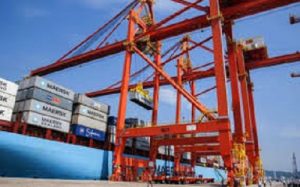Envisioning an efficient transport and logistics sector, the Philippine government is set to pursue a container rail transport service from Manila Port to a North Philippine Dry Port. The project seeks to revive freight rail service using the Philippine National Railways spur lines in the provinces of Bulacan, Nueva Ecija and Tarlac.
 A feasibility study to assess the viability of moving containerized cargoes via railway, and to determine the location for the dry port as well as the required facilities is being conducted by the Joint Venture of Systra Philippines, Inc. (SPI) and MRAIL, Inc. (MRAIL).
A feasibility study to assess the viability of moving containerized cargoes via railway, and to determine the location for the dry port as well as the required facilities is being conducted by the Joint Venture of Systra Philippines, Inc. (SPI) and MRAIL, Inc. (MRAIL).
Preliminary assessments have identified potential locations in Balagtas, Bulacan; Clark, Pampanga; and Cabanatuan, Nueva Ecija due to their proximity to existing PNR lines.
Systra-MRAIL has proposed three phases for the project.
Phase one will be the construction of Balagtas Dry Port, which will serve as the terminal for bulk goods and a loading or unloading area of containerized cargoes. Phase two will be the development of Clark Dry Port to complement the Subic-Clark Railway Project and Clark Logistics Terminal and Depot Complex. In the future, if the government has determined sufficient cargo demand going further north, another dry port may be established in Cabanatuan, San Jose or Cagayan Valley.
Initial assessment, the rail line going to Balagtas will run on a single track with two locomotives per train that can carry 21 wagons with a capacity of 42 Twenty-foot Equivalent Units (TEUs). If the line is extended to Clark, additional trains will have a total capacity of 45 wagons or 90 TEUs.
According to Systra-MRAIL, the dry port can offer value added services such as bagging, packaging, labelling, veterinary inspections, warehousing (CFS), light manufacturing, assembly, and container-related services among others.
The feasibility study is expected to be completed in November 2019.
The business sector welcomes the proposed project as Region 3 hosts three of the big free ports in the country – Clark, Subic, and Bataan. An estimated 500,000 TEUs from the North Luzon area go to Manila just to use shipping lines facilities. The railway will be able to decongest the roads from cargo trucks plying Manila. ¬— Jeanne Aramae Cruz, Advocacy and Research

